Top Strategies for Maximizing the Benefits of Solar Energy Panels for Home Use
As homeowners increasingly seek sustainable energy solutions, the adoption of solar energy panels for home use has surged. According to the Solar Energy Industries Association (SEIA), the residential solar market has grown by over 20% annually in recent years, with more than 3 million American homes now harnessing solar power. This significant shift not only helps reduce carbon footprints but also offers substantial financial benefits. A report from the National Renewable Energy Laboratory (NREL) indicates that homeowners can save an average of $20,000 on their energy bills over the lifespan of solar panels. However, maximizing these benefits requires strategic planning and informed decisions. In this blog, we will explore the top strategies for optimizing the use of solar energy panels for home, ensuring that homeowners can fully realize the long-term advantages of their investment.

Understanding Your Energy Needs: A Key Step Before Installation
Understanding your energy needs is a crucial step before installing solar energy panels in your home. By assessing your current energy consumption, you can determine the appropriate size and number of panels required to meet your needs effectively. This not only helps in maximizing efficiency but also ensures that you are investing in a system that will deliver optimal performance over its lifespan. For instance, consider conducting an energy audit to identify peak usage times and high-consumption appliances, enabling you to tailor your solar setup accordingly.
Tips: It is advisable to monitor your electricity bills for a few months prior to installation. This practice will provide you with a clearer picture of your average usage and seasonal variations. Additionally, consulting with a professional installer can offer insights into how solar technology can work best with your specific energy profile, potentially leading to cost savings and reduced reliance on traditional power sources.
By aligning your solar panel system with your energy requirements, you can contribute to a broader transition toward renewable energy, playing your part in tackling climate challenges. As we face growing energy demands globally, such as those highlighted in recent reports, personal initiatives like these are essential for sustainable living and energy security.
Choosing the Right Type of Solar Panels for Your Home
When it comes to choosing the right type of solar panels for your home, various factors come into play to maximize their benefits. The efficiency and longevity of the panels are paramount; look for options that offer robust warranties, ensuring you will have reliable solar energy for many years. Recent trends highlight brands that consistently rank highly in performance and durability, making them excellent choices for homeowners.

Another important consideration is the installation process and compatibility with your home. Innovative solutions such as plug-and-play systems provide a user-friendly option, allowing you to harness solar energy with minimal effort. Furthermore, considering the local incentives available, such as energy subsidies or rebate programs, can significantly reduce the installation costs and accelerate your return on investment.
Tips for optimizing solar energy use include strategically positioning panels to maximize sunlight exposure and exploring options for energy storage systems. These systems can help store excess energy for use during non-sunny periods, enhancing the overall efficiency of your solar setup. With thoughtful planning and the right equipment, you can significantly reduce your electricity bills and contribute positively to the environment.
Tips for Proper Installation and Maintenance of Solar Energy Systems
When it comes to solar energy systems, proper installation and maintenance are crucial to maximizing their benefits. First and foremost, choosing the right location for your solar panels can significantly influence their efficiency. Ideally, panels should be installed in an area with unobstructed sunlight exposure for most of the day. Roof installations are popular, but it’s essential to consider the angle and direction to optimize energy absorption. Engaging professional installers with experience in solar technology can ensure that the panels are fitted correctly and securely.

Regular maintenance is another key factor in maintaining the efficiency of solar panels. Homeowners should routinely clean the panels to remove dust, debris, and any obstructions that could block sunlight. Simple inspections for any dirt buildup or signs of damage should be done every few months. Additionally, it’s advisable to schedule a professional evaluation at least once a year to check the entire system's performance and address any potential issues before they become significant problems. By following these tips, homeowners can ensure their solar energy systems operate at peak performance, ultimately leading to greater energy savings and environmental benefits.
How to Optimize Solar Panel Placement for Maximum Efficiency
When optimizing solar panel placement for maximum efficiency, several key factors must be considered. First and foremost is the angle and orientation of the panels. Ideally, solar panels should face true south in the Northern Hemisphere or true north in the Southern Hemisphere to capture the maximum sunlight throughout the day.
Adjusting the tilt angle according to your geographical location can significantly enhance energy production, especially during peak sunlight hours.
Additionally, it is crucial to consider shading from trees, buildings, or other structures, as even partial shade can drastically reduce solar panel efficiency. Regular maintenance, including cleaning the panels to remove dust and debris, can also contribute to optimal performance. As technology advances, even innovative flexible panels can be installed on rooftops with limited space, showcasing that size is not always a barrier to harnessing solar energy effectively. By prioritizing these placement strategies, homeowners can truly maximize the benefits of their solar energy systems.
Leveraging Government Incentives and Rebates for Solar Projects
Government incentives and rebates play a crucial role in making solar energy panels more accessible and affordable for homeowners. Many countries and local governments offer financial support to encourage the adoption of clean energy technologies, significantly reducing the initial investment needed for solar installations. Homeowners can benefit from federal tax credits, which allow them to deduct a substantial percentage of their solar panel installation costs from their federal taxes. Additionally, various state and local programs offer direct rebates that can lessen upfront expenses, making solar energy an even more attractive option.
Beyond tax credits, some regions provide unique financing options, such as Property Assessed Clean Energy (PACE) programs, which enable homeowners to finance solar projects through their property taxes. This approach allows for lower monthly payments, which can be particularly appealing for those concerned about cash flow. By leveraging these incentives, homeowners can maximize their return on investment while contributing to a more sustainable future. Therefore, it’s essential for prospective solar energy users to research available incentives and rebates in their area to fully capitalize on the financial benefits of switching to solar energy.
Top Strategies for Maximizing the Benefits of Solar Energy Panels for Home Use
| Strategy | Description | Potential Savings (%) | Government Incentives |
|---|---|---|---|
| Utilize Federal Tax Credit | Claim a percentage of the installation costs as a tax credit. | 26% | Federal Solar Investment Tax Credit (ITC) |
| State-Specific Rebates | Loans or cash grants offered by individual states to incentivize solar use. | Varies by state | State-specific solar energy rebates |
| Net Metering | Receive credits for excess energy produced by solar panels. | Up to 100% | Varies by utility |
| Property Tax Exemptions | Exemption on property taxes for the added value of solar panels. | Varies by location | Certain states offer property tax exemptions for solar energy systems |
| Solar Renewable Energy Certificates (SRECs) | Sell SRECs earned for producing renewable energy. | Depends on market rates | Available in certain states with established SREC markets |
Related Posts
-
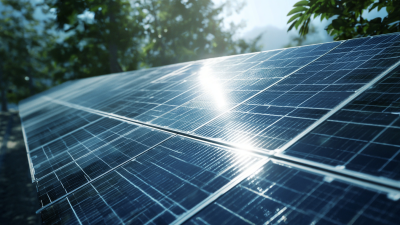
Advantages of Choosing the Best Solar Panels for Sustainable Energy Solutions
-
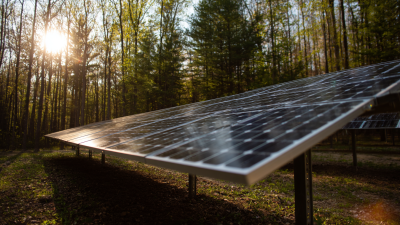
10 Essential Tips for Sourcing Solar Panels Effectively in 2024
-
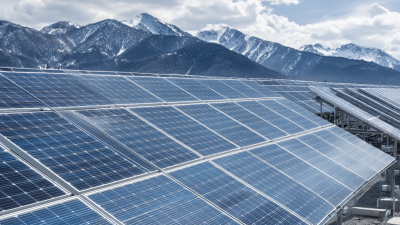
Emerging Technologies Shaping the Future of Home Solar Energy Panels by 2025
-
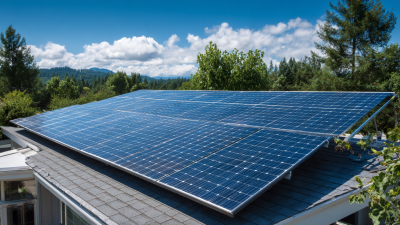
How to Source Quality Suppliers for Best Solar System Installation with a Comprehensive Checklist
-
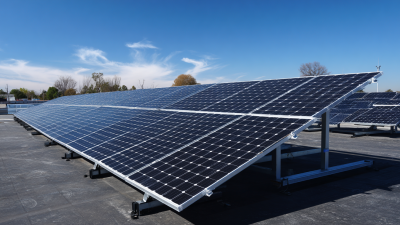
Top Industry Standards and Key Reasons to Choose the Best Solar Energy Panels for Global Buyers
-
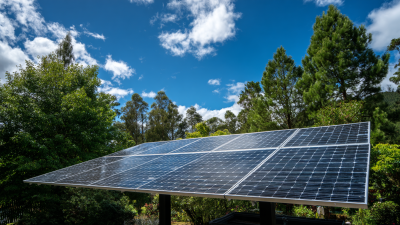
7 Best Solar Panels for Maximum Efficiency in 2023